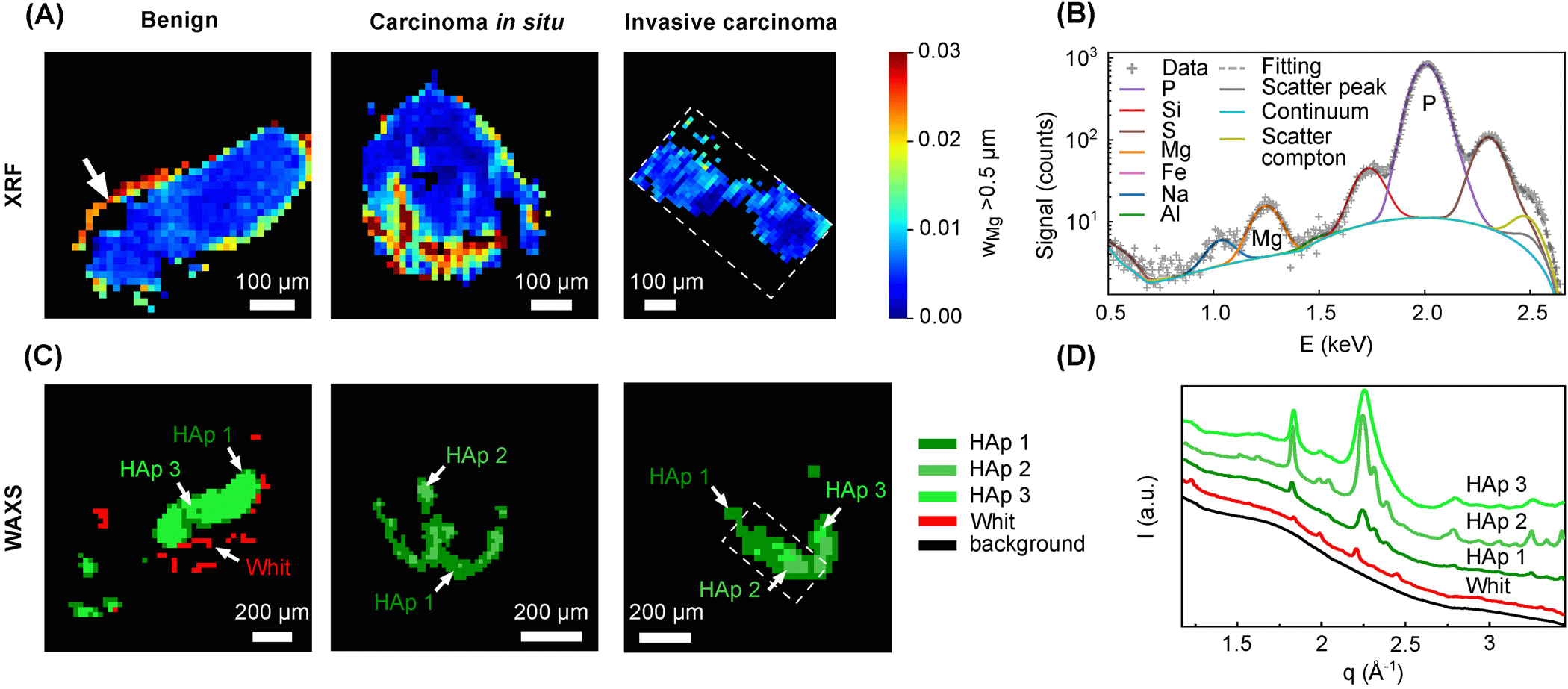Whitlockite in mammary microcalcifications is not associated with breast cancer
Microcalcifications, small deposits of calcium-containing minerals that form in breast tissue, are often, but not always, a warning sign of breast cancer. The relationship between microcalcifications and cancer has not been fully understood thus far.
This study published in the journal Cancer Communications is the result of collaboration among Paul Scherrer Institute, University of Milan and Breast Unit at Maugeri Scientific Clinical Institutes, Photonics and Nanotechnologies (Cnr-Ifn) and Institute of Crystallography (Cnr-Ic) of the National Research Council.
The researchers discovered that the relationship between microcalcifications and tumors seems to be linked to the presence of a particular mineral called whitlockite, which is rich in magnesium and is found in microcalcifications only in the absence of tumors. Advanced spectroscopy techniques (Raman, XRF at the PHOENIX and WAXS at the cSAXS beamline of the SLS) were used to analyze microcalcifications taken from breast cancer patients. They compared the samples with those from healthy women and observed that whitlockite was nearly absent in tumor tissues but abundant in healthy tissues.
This suggests that breast cancer has the ability to alter the metabolism of calcium and magnesium in breast tissue, influencing the formation of microcalcifications, eliminating whitlockite, and making them harder. This, in turn, may make them more capable of further stimulating tumor growth.
